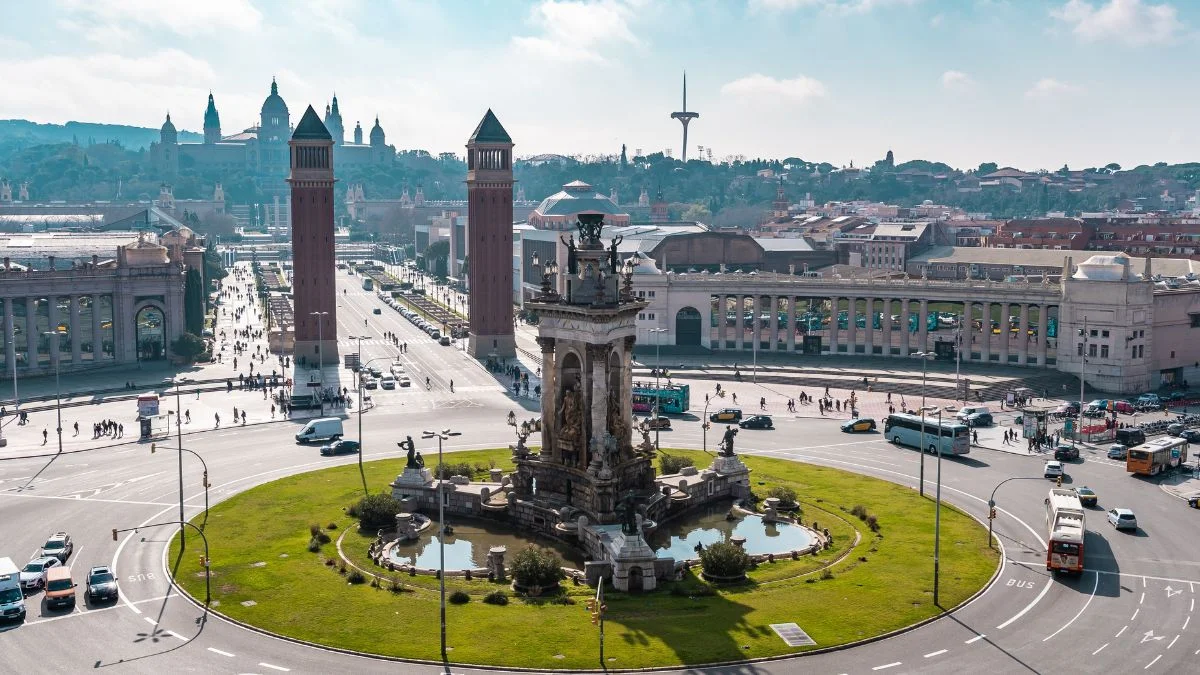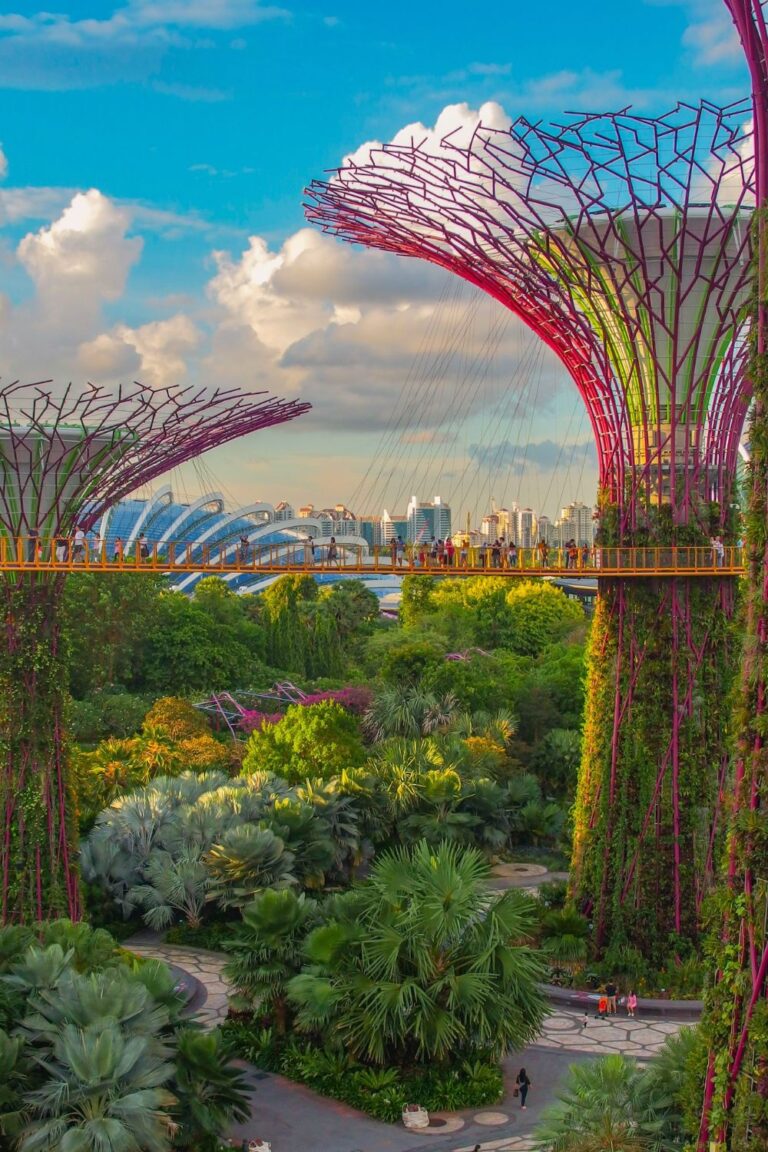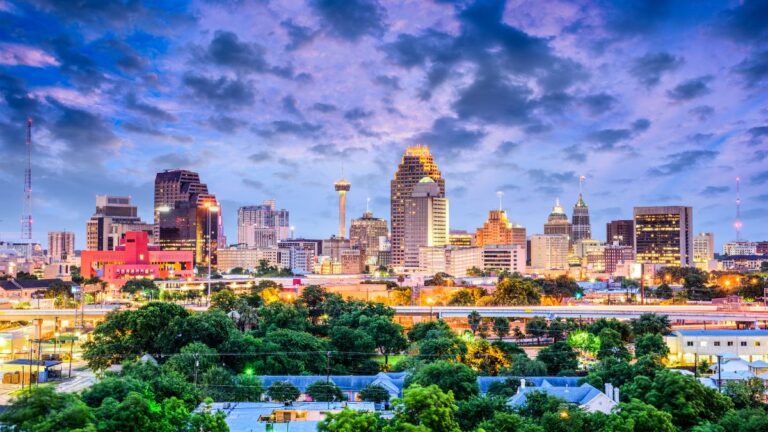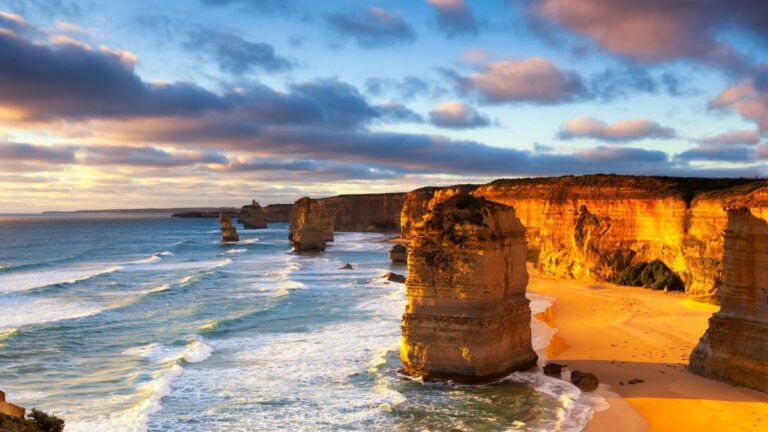Barcelona Travel Guide: Art, Architecture, and the Allure of Catalan Culture

As participants in Amazon Associates and other programs, we earn from qualifying purchases. This comes at no additional cost to you. For more details, see our Affiliate Disclosure.
Barcelona captivates visitors with its vibrant mix of art, architecture, and the rich traditions of Catalan culture. This bustling city on the northeastern coast of Spain is famous for its unique blend of modernist landmarks by Antoni Gaudí, such as the Sagrada Familia and Park Güell, and its lively streets filled with tapas bars and lively plazas. Whether you’re strolling along the bustling Las Ramblas, soaking in the Mediterranean atmosphere, or exploring the many museums and galleries, Barcelona promises a sensory overload, rich with cultural treasures and architectural marvels.
The Sagrada Familia: Gaudí’s Unfinished Masterpiece
The Sagrada Familia is perhaps the most iconic symbol of Barcelona and the magnum opus of the celebrated Catalan architect Antoni Gaudí. This colossal basilica has been under construction since 1882 and is famed for its intricate facades and towering spires. Gaudí devoted over 40 years of his life to the project, and his visionary approach combined Gothic and curvilinear Art Nouveau forms that continue to draw admiration from around the world.
Despite its ongoing construction, with a projected completion by 2026, the centenary of Gaudí’s death, the Sagrada Familia attracts millions of visitors each year. Visitors can explore the nave, crypt, museum, and the passion and nativity towers, each offering a unique perspective of Gaudí’s innovative design and spiritual symbolism. The interior, with its vast, tree-like columns and spectacular stained glass, creates a kaleidoscope of light that is simply breathtaking.
Las Ramblas: The Heart of Barcelona’s Social Life
Las Ramblas is a vibrant, tree-lined boulevard stretching 1.2 kilometers through the heart of Barcelona, from Plaça de Catalunya to the Christopher Columbus Monument at Port Vell. This bustling promenade is always filled with tourists and locals alike, attracted by its lively atmosphere and cultural vibrancy. Along Las Ramblas, one can find a series of shops, cafes, and markets, including the famous La Boqueria, where a colorful array of fresh produce and local delicacies are on display.
Beyond shopping and dining, Las Ramblas offers various street performances, live music, and artistic displays that contribute to its dynamic environment. Walking down Las Ramblas, visitors get a real sense of Barcelona’s urban culture, from the historic Gran Teatre del Liceu to the modernist Palau de la Virreina, making it a perfect place to see the city in all its complexity and charm.
The Magic of Park Güell
Park Güell is another of Antoni Gaudí’s masterpieces, originally conceived as a residential estate but now one of Barcelona’s most enchanting public parks. Located on Carmel Hill, the park is renowned for its artistic landscaping, colorful ceramic mosaics, and panoramic views of the city below. Gaudí’s touch is evident in every corner of the park, from the serpentine bench encrusted with tiles to the famous salamander sculpture, known as “El Drac.”
Visitors to Park Güell can explore its gardens, viaducts, and grottoes, each designed with Gaudí’s distinctive blend of naturalism and architectural innovation. The park is not only a testament to Gaudí’s genius but also offers a peaceful retreat from the city’s hustle and bustle, with paths winding through lush greenery and shaded areas ideal for relaxation and contemplation.
Gothic Quarter: A Walk Through History
The Gothic Quarter is the historical heart of Barcelona, characterized by narrow medieval streets filled with trendy bars, clubs, and Catalan restaurants. This area is home to many significant landmarks, including the stunning Barcelona Cathedral, the medieval Jewish quarter, and a number of Roman relics. The Gothic Quarter is also the location of the Plaça del Rei, a historic square where it is said Columbus was received by the Catholic Monarchs after his first voyage to the Americas.
Walking through the Gothic Quarter is like stepping back in time. The preserved architecture and historical atmosphere offer a stark contrast to the more modern parts of the city. Visitors are encouraged to lose themselves in the labyrinth of interconnecting streets and discover hidden squares and charming patios, which provide a quieter glimpse into the daily lives of the residents.
Montjuïc: A Hill of Art and Leisure
Montjuïc is a broad, shallow hill with a commanding view over the harbor, to the southeast, and downtown Barcelona. This area is a major cultural and recreational hub, home to the Montjuïc Castle, a large number of museums including the Fundació Joan Miró and the Museu Nacional d’Art de Catalunya (MNAC), and facilities from the 1992 Olympic Games. The hill is also famous for the Magic Fountain, which offers spectacular displays of light, water, and music.
Visitors can spend a day exploring Montjuïc’s many attractions. The area is accessible by funicular and cable car, which offer scenic routes to the top. Besides cultural venues, Montjuïc features expansive gardens and sports facilities, making it a popular spot among both locals and tourists looking to enjoy a bit of nature and history in a single place.
The Picasso Museum: Following the Artistic Journey
The Picasso Museum in Barcelona is a key reference for understanding the formative years of Pablo Picasso. The museum holds one of the most extensive collections of artworks by the 20th-century Spanish artist, with over 4,000 works. The collection includes paintings, drawings, sculptures, and prints from Picasso’s early years, showcasing his deep relationship with Barcelona, which he always maintained was crucial for his artistic development.
The museum, housed in five adjoining medieval palaces in the La Ribera neighborhood, not only highlights Picasso’s genius but also provides insight into his evolving artistic vision. Special exhibitions and educational programs make this museum a focal point for art lovers interested in the life and works of Picasso, offering a comprehensive look at his profound influence on the art world.
Catalan Cuisine: More Than Just Tapas
Catalan cuisine is a reflection of the region’s diverse landscape, from the mountains to the Mediterranean sea. Barcelona, as the capital of Catalonia, offers a gastronomic experience that ranges from traditional Catalan dishes to innovative culinary creations. Typical dishes include ‘pa amb tomàquet’ (bread rubbed with tomato and olive oil), ‘escudella i carn d’olla’ (a hearty stew of meat and vegetables), and ‘crema catalana’ (Catalonia’s version of crème brûlée).
Food lovers can explore Barcelona’s culinary offerings by visiting local tapas bars, seafood restaurants, and marketplaces like La Boqueria. Here, the emphasis is on fresh ingredients and combinations that reflect the region’s culinary heritage but also embrace new influences. Dining in Barcelona is an adventure in taste, showcasing the creativity and richness of Catalan cuisine.
Barcelona’s Beaches: Sun, Sand, and Sea
Barcelona’s coastline offers several beautiful beaches that are perfect for sunbathing, swimming, and water sports. The most famous is Barceloneta Beach, located in the traditional fishing district, offering a lively beach scene with numerous bars and restaurants along the promenade. For a more tranquil experience, beaches like Bogatell and Mar Bella are less crowded and provide a more relaxed atmosphere.
The city’s beaches are not just for summer; they also offer a pleasant escape throughout the year with facilities for volleyball, windsurfing, and kite surfing. Walking along the Mediterranean, with the sound of waves and the scent of salt air, is one of the simple pleasures of visiting Barcelona, providing a wonderful blend of city life and beach relaxation.
The Passeig de Gràcia: Shopping and Architecture
The Passeig de Gràcia is not only one of the major avenues in Barcelona but also one of its most important shopping and business areas, containing several of the city’s most celebrated pieces of architecture. Renowned for its luxury shopping, the street is lined with high-end brands and designer shops, but it is also a cultural tour de force with landmarks like Casa Batlló and La Pedrera by Antoni Gaudí.
Strolling down Passeig de Gràcia, visitors can admire the architectural beauty and the modernist buildings that have made this street famous worldwide. The avenue is a showcase of Barcelona’s artistic flair, combining commerce and culture in a uniquely elegant setting.
The Vibrant Nightlife of El Raval
El Raval offers a taste of Barcelona’s edgier side, with its diverse and dynamic nightlife that caters to all preferences. Known for its bohemian atmosphere, the neighborhood is packed with bars, live music venues, and nightclubs that stay open until the early hours. From jazz bars and traditional Catalan music to contemporary pop and electronic dance music, El Raval has something for everyone.
The area’s cultural diversity is also reflected in its nightlife offerings, with a variety of venues that celebrate international and local music and art scenes. Exploring El Raval after dark is an experience in itself, providing insights into the younger, more alternative aspects of Barcelona’s cultural life, making it a must-visit for night owls looking to experience the city’s vibrant energy.





